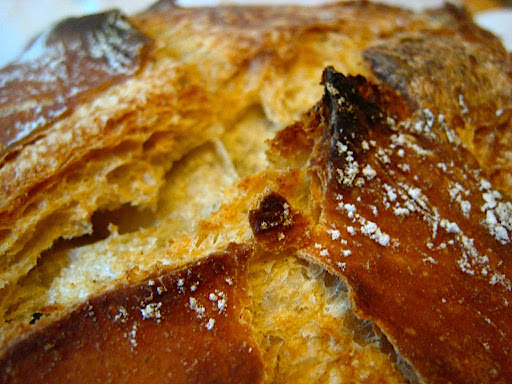
So to my great surprise the sourdough starter I have been faithfully using for over a year has recently gone 'flat'. I will feed it per my usual schedule and it does rise, but it doesn't "bounce" to it's normal doubling.
As any good baker will know, a starter will show vigorous activity within the first hour and should double within 4-8 hours depending on the ratio of starter to water/flour it was fed.
I had a real mystery on my hands so I decided to try and figure out what happened. After a few experiments I narrowed the suspects down to temperature & water. I was able to eliminate the temperature variable by trying a cultivation in a stable tempature area with no sunlight (to minimize variations), so that just left water. I had been using the same tap water for over a year, but obviously something changed.
Our tap water is moderately hard, but normally calcium does not affect sourdough starters. Though my hypothesis was that maybe our local water municipality changed the percentage of chlorine in the water.
I tested this theory out by cultivating a new starter from some preserved starter I had saved for an emergency (more on that in another post). I cultivated this new starter with only bottled water. It was a bit more expensive than tap water but after a week it seemed to be showing strong results.
To double-verify my results I did one feeding of the new starter with tap water, and it had disastrous results. It killed a good portion of the starter.
While I was pleased that my hypothesis was confirmed I was still baffled at why tap water would suddenly become so hostile. It turns out that the water municipality had changed from Chlorine to
Chloramine (which is a derivative, and more stable).
A quick check on Google confirmed this:
http://www.sourdoughhome.com/startingastarter.htmlSourdough by it's nature is a hardy
bacteria that can survive all sorts of different environments, but when it encounters chemicals that are
anti-bacterial in nature it makes it hard to grow the way it should.
It looks like it's time to start experimenting with
dechlorination, or I'll just buy bottled water by the jug.
All this trouble hasn't stopped me from baking 2-3 loaves per weekend, even with a semi-flat stater. Nothing can come between a baker and his bread.
-Matt the weekend baker.



